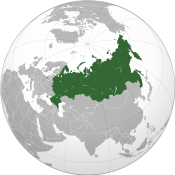Soyuz TMA-15 launches crew to International Space Station
Thursday, May 28, 2009

At 10:34 UTC (4:34 p.m. local time) Wednesday, a Russian Soyuz-FG carrier rocket launched from Site 1/5 at the Baikonur Cosmodrome in Kazakhstan, with the Soyuz TMA-15 spacecraft, on a manned spaceflight to the International Space Station (ISS).
Aboard were three Expedition 20 crew members, Roman Romanenko of the Russian Federal Space Agency (RSA), Belgian Frank De Winne of the European Space Agency (ESA) and Robert Thirsk of the Canadian Space Agency (CSA).

The launch was almost cancelled due to strong winds and the threat of swine flu carried by a journalist however, the flight was just delayed by eight hours. "The Russians do a magnificent record of taking people to space and back. They don't have a launch window, they don't have launch date, they have a launch second," said Chris Hadfield, a Canadian astronaut.
It will be a two day journey to the ISS with the crew expecting to arrive on Friday. Then there will be six crew members aboard the ISS who will represent all five global space agencies; National Aeronautics and Space Administration (NASA), Japan Aerospace Exploration Agency, RSA, ESA and CSA.
Thirsk will spend six months aboard the ISS, "It's only in those situations where you are able to realize what your own weakness and strengths are and the weaknesses and strengths of your astronaut colleagues as well, and then work as a team to meet everyone's needs."
Romanenko follows his father's footsteps, cosmonaut Yuri Romanenko, into space.

DeWinne will become the ISS commander in October following Gennady Padalka. "It is quite an achievement," said Crown Prince Philippe of Belgium, "He represents Europe, he represents Belgium, he represents international collaboration for peaceful application of science."
Sources
- Amiko Kauderer. "Expedition 20 Crew Launches from Baikonur" — NASA, May 27, 2009
- Claire Brownell. "Canadian astronaut Thirsk bound for International Space Station" — CBC News, May 27, 2009
- Peter Leonard, Associated Press. "Russian capsule blasts off for space station" — Yahoo, May 27, 2009
- Peter Leonard, Associated Press. "Rocket mission set to double space station crew" — Yahoo, May 26, 2009

